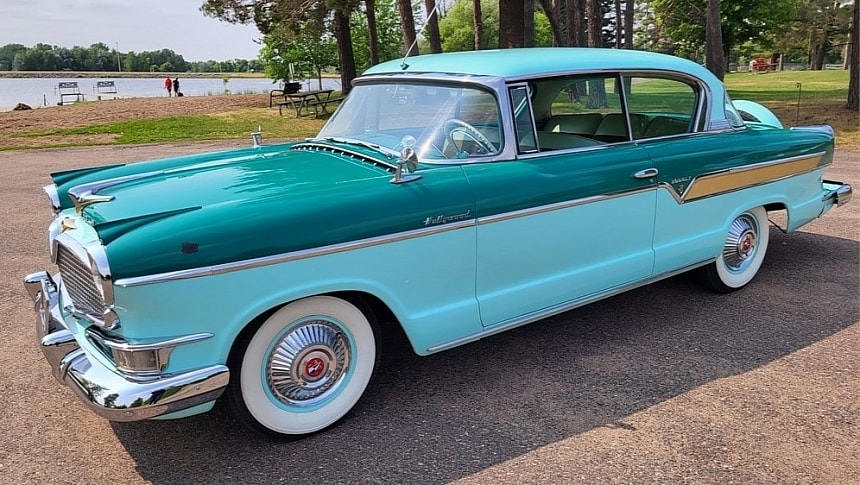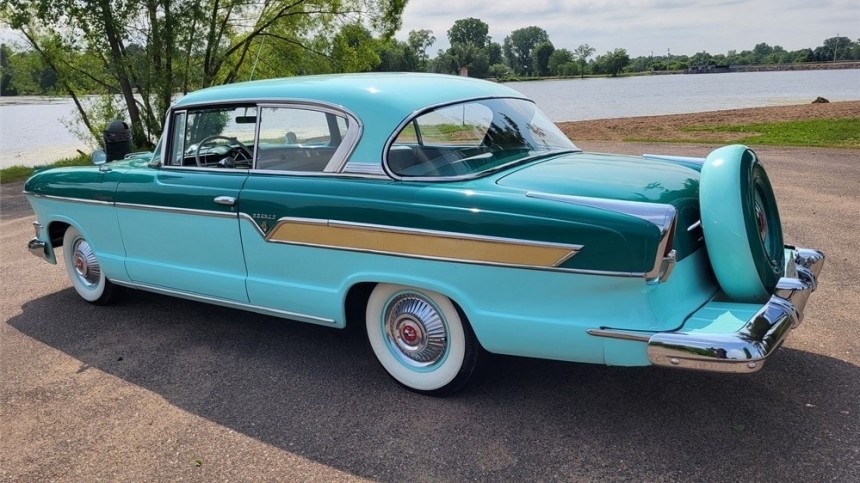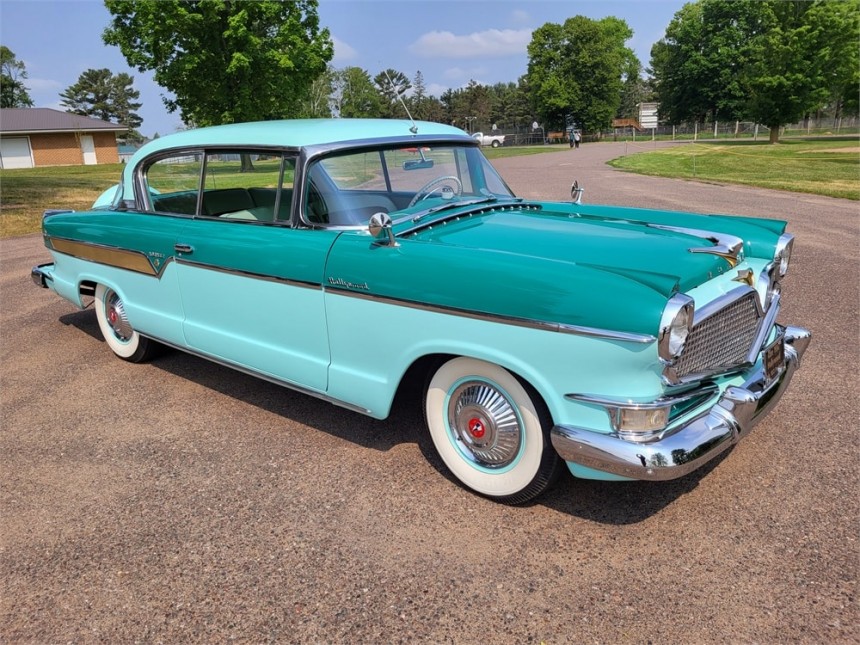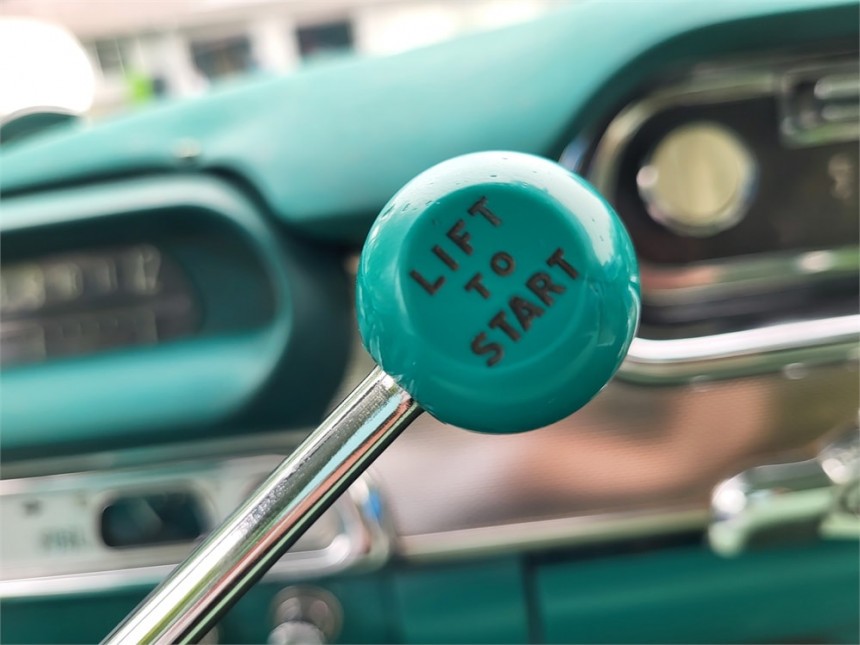In 1954, two companies sealed the deal on the largest corporate merger the United States had ever seen, with the arrangement worth close to $200 million dollars. If economics isn’t a particular field of interest, please note that the parties involved came from the automotive sector: Nash-Kelvinator and Hudson joined forces under the American Motors Corporation coat of arms.
This led to the emergence of another Big in Detroit, and the planned absorption of Packard and Studebaker should have further consolidated the company. For reasons beyond the purpose of this story, the whole affair went bust, and AMC was left to tackle the GM-Ford-Chrysler piston trinity without the support of the other two brands.
However, before the collapse of the whole construction, Packard and AMC shook hands over sharing parts – with Packard supplying the powerplants for the American Motors bodies through a series of intricate events; by 1956, the relationship hit an all-time low, and AMC decided to develop its engines, cutting all ties with Packard.
This animosity led to a curious production year, in which the early 1956 AMC cars came with a Packard plant, while the latter were fitted with the all-new AMC motors. Among these odd-ball mules is a name firmly anchored in the foundation of American motoring heritage: Hudson.
Established as the NASCAR sensation of the early 50s, when the racing series was in its infancy, Hudson veered into a distant orbit when the Packard-AMC affair whiffed off a big cloud of smoke and nothing more. The famous brand still relied on the aura of its 66 NASCAR wins (between ’52 and ’ '54) even when it became clear to everyone that American Motors’ aim for the Big Three moon was a dead-on miss.
That’s how oddities such as the Hudson Hornet with a Packard V8 were born, like the example featured in the Martin Auto Museum showroom in Glendale, Arizona, posing for the camera in the video below. Being a hardtop two-door makes it a ‘Hollywood,’ one of 1,053 built for the 1956 model year. Being a Hudson is legacy enough as it is, but this car is no longer a true descendant of the legendary Hornet that reigned supreme over the dirt tracks.
After the 1954 piston matrimony, Hudson automobiles started wearing Nash bodies, and the Packard motors only added pain to the misery. In 1956, a heavy restyling occurred, resulting in the car starring in Lou Costabile’s video from this January. To melt the enthusiasm, this Hornet is a restored example, not a survivor, and it’s not in tip-top condition. Sure, it would pass the 50-50 test with flying colors, but under up-close and personal scrutiny, it’s flaws are beyond dispute.
The Packard 352 cubic-inch V8 (5.8 liters) and the to-speed Ultramatic automatic transmission are functional and operational, and the car is a driver. Not that it would need to be – it's not going anywhere soon. The owner bought it at an online auction in July 2023 for the modest sum of $15,500 and plans to keep it in his collection.
The car was restored at one point in its life, and the Bermuda Green / Polo Green two-tone livery was refreshed – and it goes well with the Forsyth Dark Green cloth and Light Green leather on the reclining front split-bench seat and rear seat. The continental kit was also added, giving this not-so-Hudson Hornet Hollywood an extra touch of 50s spirit.
The classic automobile has power brakes (all drums), power steering, a column-mounted shift lever for the automatic gearbox, an AM radio, and air conditioning. Remember that AMC was born from the Nash-Kelvinator and Hudson wedlock? Well, Nash Motors and Kelvinator Appliance Company merged in 1937; since Kelvinator was a refrigerator manufacturer, it was only natural for the cars to be offered with climate-controlling units.
The odometer reads 56,339 miles (90,650 km), but the last seller stated it wasn’t functional, so the car’s true road experience might be greater than it says on the clock. However, the engine has been refined with a tune-up, fresh oil, and an electric fuel pump before its sale last summer, so the 220-hp promise made in 1956 might still hold water even after 68 years.
The Packard-AMC divorce led to a rather strange situation in 1956 – apart from examples like this one, equipped with the Packard V8, Hudson rolled out cars with the new AMC V8, a small 250-cubic-inch (4.1 liters) that offered 190 hp.
It wasn’t impressive among other Detroit eight-cylinder offers for that year, but it improved from the aging V8 reluctantly donated by a moribund company. Packard’s cars developed solely under the historic name ceased to exist after June 25, 1956, being phased out by Studebaker-Packard mongrels.
The Hollywood V8 two-door hardtop was the Hornet’s top-tier offer for the model year, with a price tag of $3,430 – quite a bit of money back then, when the average cost of a car was $2,050, and a gallon of gas was 22 cents.
However, before the collapse of the whole construction, Packard and AMC shook hands over sharing parts – with Packard supplying the powerplants for the American Motors bodies through a series of intricate events; by 1956, the relationship hit an all-time low, and AMC decided to develop its engines, cutting all ties with Packard.
This animosity led to a curious production year, in which the early 1956 AMC cars came with a Packard plant, while the latter were fitted with the all-new AMC motors. Among these odd-ball mules is a name firmly anchored in the foundation of American motoring heritage: Hudson.
That’s how oddities such as the Hudson Hornet with a Packard V8 were born, like the example featured in the Martin Auto Museum showroom in Glendale, Arizona, posing for the camera in the video below. Being a hardtop two-door makes it a ‘Hollywood,’ one of 1,053 built for the 1956 model year. Being a Hudson is legacy enough as it is, but this car is no longer a true descendant of the legendary Hornet that reigned supreme over the dirt tracks.
After the 1954 piston matrimony, Hudson automobiles started wearing Nash bodies, and the Packard motors only added pain to the misery. In 1956, a heavy restyling occurred, resulting in the car starring in Lou Costabile’s video from this January. To melt the enthusiasm, this Hornet is a restored example, not a survivor, and it’s not in tip-top condition. Sure, it would pass the 50-50 test with flying colors, but under up-close and personal scrutiny, it’s flaws are beyond dispute.
The car was restored at one point in its life, and the Bermuda Green / Polo Green two-tone livery was refreshed – and it goes well with the Forsyth Dark Green cloth and Light Green leather on the reclining front split-bench seat and rear seat. The continental kit was also added, giving this not-so-Hudson Hornet Hollywood an extra touch of 50s spirit.
The classic automobile has power brakes (all drums), power steering, a column-mounted shift lever for the automatic gearbox, an AM radio, and air conditioning. Remember that AMC was born from the Nash-Kelvinator and Hudson wedlock? Well, Nash Motors and Kelvinator Appliance Company merged in 1937; since Kelvinator was a refrigerator manufacturer, it was only natural for the cars to be offered with climate-controlling units.
The Packard-AMC divorce led to a rather strange situation in 1956 – apart from examples like this one, equipped with the Packard V8, Hudson rolled out cars with the new AMC V8, a small 250-cubic-inch (4.1 liters) that offered 190 hp.
It wasn’t impressive among other Detroit eight-cylinder offers for that year, but it improved from the aging V8 reluctantly donated by a moribund company. Packard’s cars developed solely under the historic name ceased to exist after June 25, 1956, being phased out by Studebaker-Packard mongrels.
The Hollywood V8 two-door hardtop was the Hornet’s top-tier offer for the model year, with a price tag of $3,430 – quite a bit of money back then, when the average cost of a car was $2,050, and a gallon of gas was 22 cents.






















